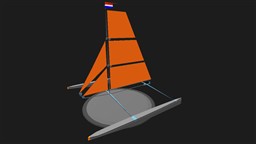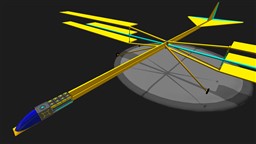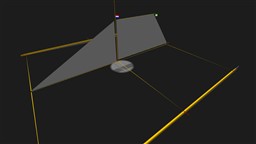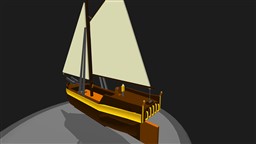1,522 SlowSailor
Player Biography
I mostly use Simple Planes to make sailing vessels. If you want to try it yourself here are some basics.
Basics of building a sailboat
- To make your boat steady in a straight line place the rudder as far from the Midpoint of the sword(s) as possible.
- Make the outer floating points on the side as far as possible against tipping over.
- Make the sails as low as possible so the wind doesn't push the ship over easely (remember torque in N/m).
- Hold the Centre off Mass (CoM) iether as low as possible or as much to the higher side as possible (with a moving dead weight).
- Keep a lot of buaoyancy on the bow and the CoM in the stern for the wind pushing you forward.
- Mind your "drag points": Don't use a wider hull you need and use "Structual penals". Those are strong, light when small and don't have drag at all.
Basics of sailing
- Always start either on half-wind or with the wind in the back. It's possible to start against the wind but for most ships it's anoying af to sail backwards.
- More weight on the higher side often makes the ship want to go away from the wind and weight on the lower side often makes the ship want to go to the wind.
- Tighten the foresail or loosen the main sail (or back sail) to move away from the wind and Tighten the main sail (or back sail) or loosen the foresail to turn towards the wind.
- Last but not least: The speed given (IAS) is not your real speed but your speed compared to the wind. You can stop the wind to see your speed immediately afterwards or sail exactly half-wind (90* of-wind) and use Pythagoras:
Root of (IAS^2 - Windspeed^2)
Windspeeds
mph - km/h - Beaufort
05 - 08 - 2 - Almost no wind
10 - 16 - 3 - Good wind for light sailboats (optimist)
15 - 24 - 4 - Good wind for medium sailingvessels (valk)
20 - 32 - 5 - A bit harsh wind
25 - 40 - 6 - Harsh wind
30 - 48 - 6 - Even more harsh (suprise isn't it)
35 - 56 - 7 - I don't think you should sail
40 - 64 - 8
45 - 72 - 8
50 - 80 - 9
Previously known as
KabouterWesley








